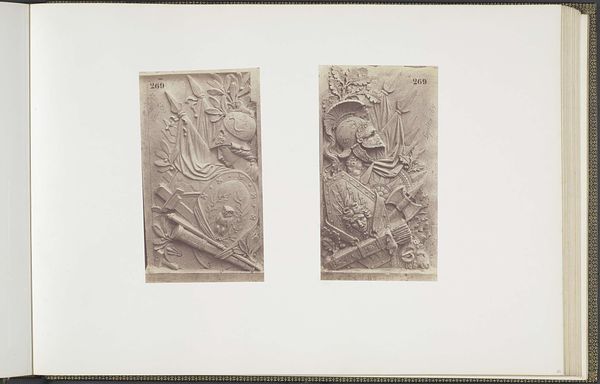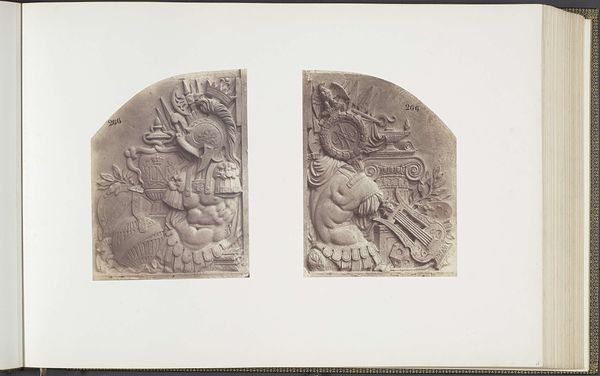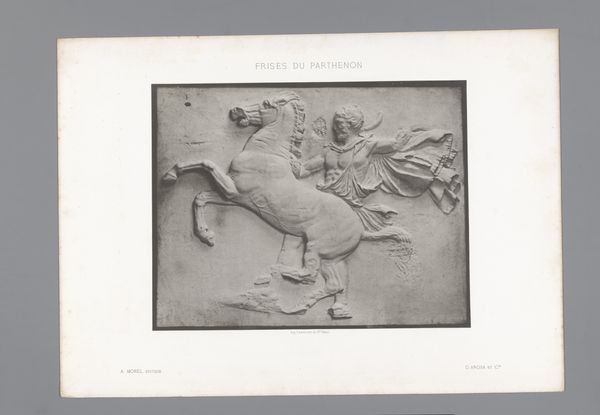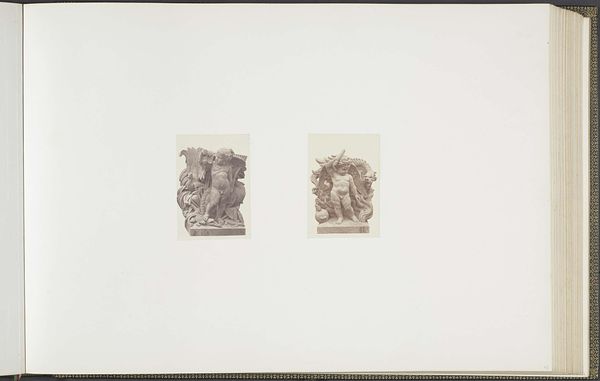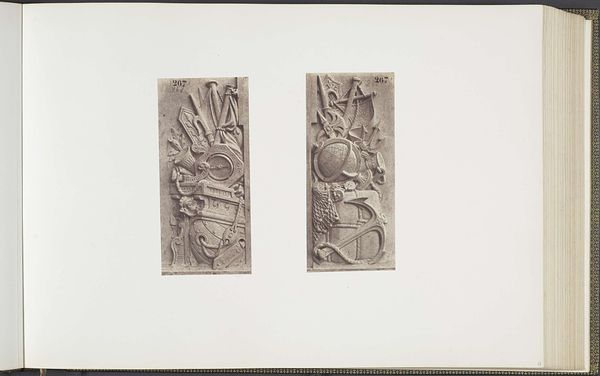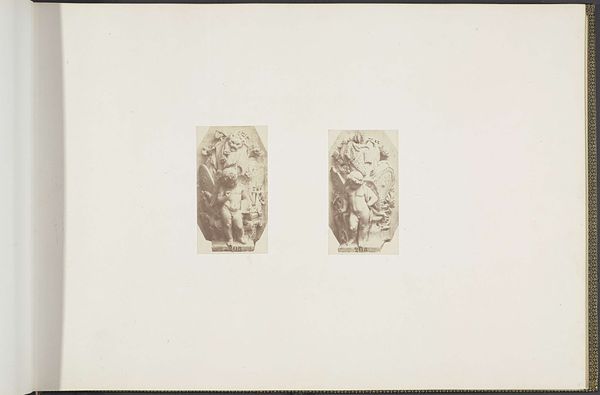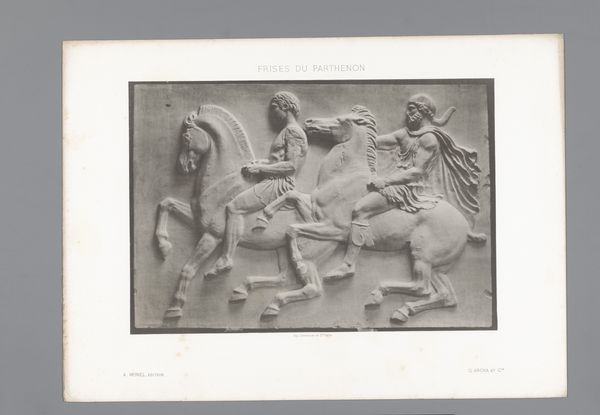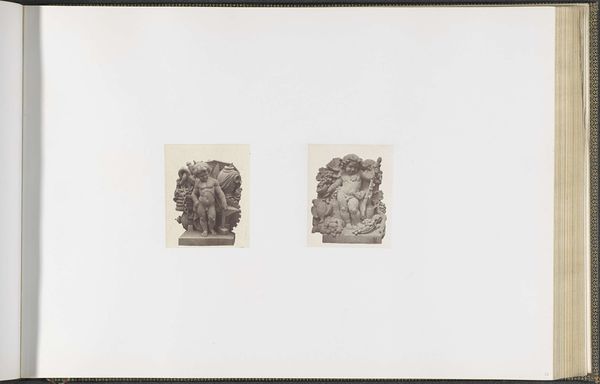
Gipsmodellen voor versieringen op het Palais du Louvre door Emile Knecht c. 1855 - 1857
0:00
0:00
print, relief, photography, gelatin-silver-print, marble
#
portrait
# print
#
relief
#
photography
#
gelatin-silver-print
#
academic-art
#
marble
Dimensions: height 378 mm, width 556 mm
Copyright: Rijks Museum: Open Domain
Curator: These arresting photographs before us offer a fascinating glimpse into the creation of architectural ornament. Taken by Édouard Baldus between approximately 1855 and 1857, they depict plaster models crafted by Emile Knecht for decorations on the Palais du Louvre. Editor: My initial reaction is struck by the overwhelming whiteness and intricate detail rendered with such sharp focus. It is a very stark composition that amplifies the artistry within those plaster reliefs. Curator: Baldus’ photographs aren't merely documentation; they're a dialogue between art and power, between the sculptor’s vision and the architect's ambition to build a symbol of Imperial France, during a time when photography itself was wrestling with its artistic legitimacy. How were marginalized communities and the working class affected by this royal endeavor, and what symbolic messaging did these sculptures embed within the architectural fabric? Editor: Indeed, the relief format presents some peculiar tensions: on one hand, it evokes classical antiquity with its allusions to idealized forms, Roman armour, and what appears to be laurel wreaths; on the other hand, Baldus, through sharp lighting, flattens them to graphic forms on a shallow picture plane that is more abstract than representative. Curator: I wonder too how Knecht's artistry might relate to notions of masculinity and authority prevalent in mid-19th-century France, as figures adorn classical male symbols, emblems, and battlements. Are we seeing here an endorsement or a critique of traditional power structures? Editor: One might consider, too, how Knecht plays with textural variation and subtle tonal gradations, particularly in the modeling of flesh. He brings those textures in to a harmonic tension which generates depth, so he can achieve very realistic sculptural effects that make it more than mere architectural decoration. Curator: Examining Baldus' work reminds us that art always exists within intricate webs of social and political relationships and we must keep analyzing those for deeper insights. Editor: It is equally remarkable that in its visual language and the semiotics, photography offers not just representational data, but something more which gives another level to understanding this historical subject.
Comments
No comments
Be the first to comment and join the conversation on the ultimate creative platform.


